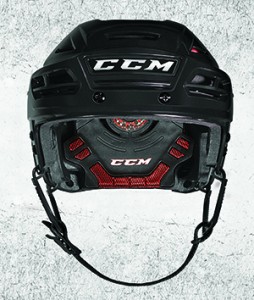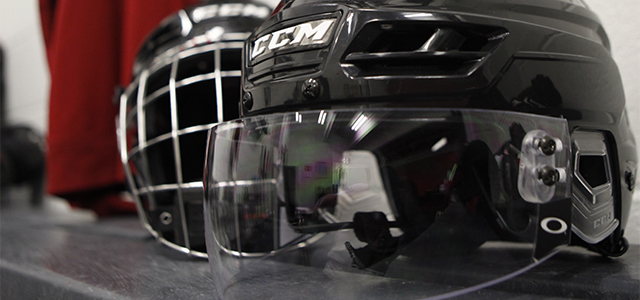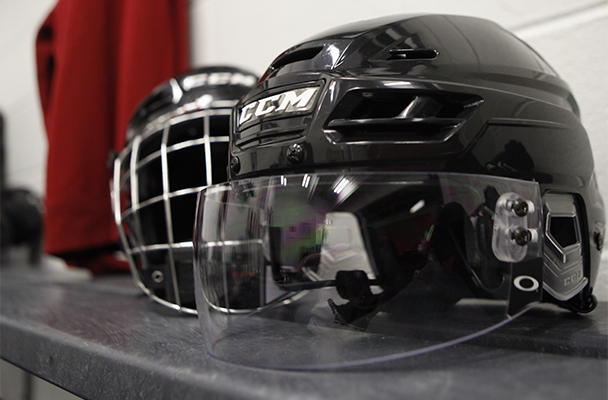CCM’s new Resistance a helmet years in the making

By Michael Caples –
It’s been a while since CCM released their latest helmet. Turns out they’ve been hard at work on one all the while.
The company’s new Resistance helmet is the result of a lengthy partnership with the Neurotrauma Impact Science Laboratory in Ottawa, as CCM attempted to reach a better understanding on what causes head injuries in collisions and hits.
Laura Gibson, product manager for Reebok-CCM Hockey, said that the Resistance helmet is the result of their head injury exploration.
“We are very excited about this launch as this helmet is really the culmination of many years of working on better understanding the mechanisms that cause injuries,” Gibson said. “The Neurotrauma Impact Science Laboratory allows CCM to study the stress and strain that occurs on the brain when a head is impacted. Helmets are designed to reduce the accelerations that are transferred through the helmet to the brain. Upon impact, a head will have a linear and a rotational component to its movement.
“The Resistance helmet is designed to manage both the linear and rotational accelerations that could occur in the game of hockey.”
The Resistance helmet, which has been gradually revealed at the pro level this season, features CCM’s Rotational Energy Dampering technology, which functions as a shock absorber for the hockey player.
“The Resistance helmet features a revolutionary new liner made up of the R.E.D system and new impact pods. The R.E.D. system is a series of liquid-filled bladders that help to manage the rotational aspects of hockey hits. The impact pods are an engineered structure that combines EPP foam and a plastic shock absorber to help manage the linear aspects of hockey hits. When combining the two technologies, this revolutionary liner was engineered to put technology to the service of player safety.”
Even the Resistance facemask will work at minimalizing injuries for the amateur hockey player.
“The Resistance facemask has ‘dampening’ zones at the top clips and the J-clips,” Gibson said. “These ‘zones’ help absorb some of the energy when receiving a hit in the face. The face mask is build off our most popular facemask shape but brings flat wires bars to improve visibility on the ice.”
Gibson said what will set the Resistance helmet apart from the competition is the engineering within the shell.
“It’s unique in the way it manages rotational accelerations by creating a decoupling between the shell and the liner. The bladders help ‘resist’ the spin action of the shell. The liquid filled bladders are truly unique in how they manage these accelerations. Unlike traditional helmets that have die cut VN or molded EPP liners, the RESISTANCE helmet features an engineered solution.”
The Resistance helmet will be available to the public later this month.


